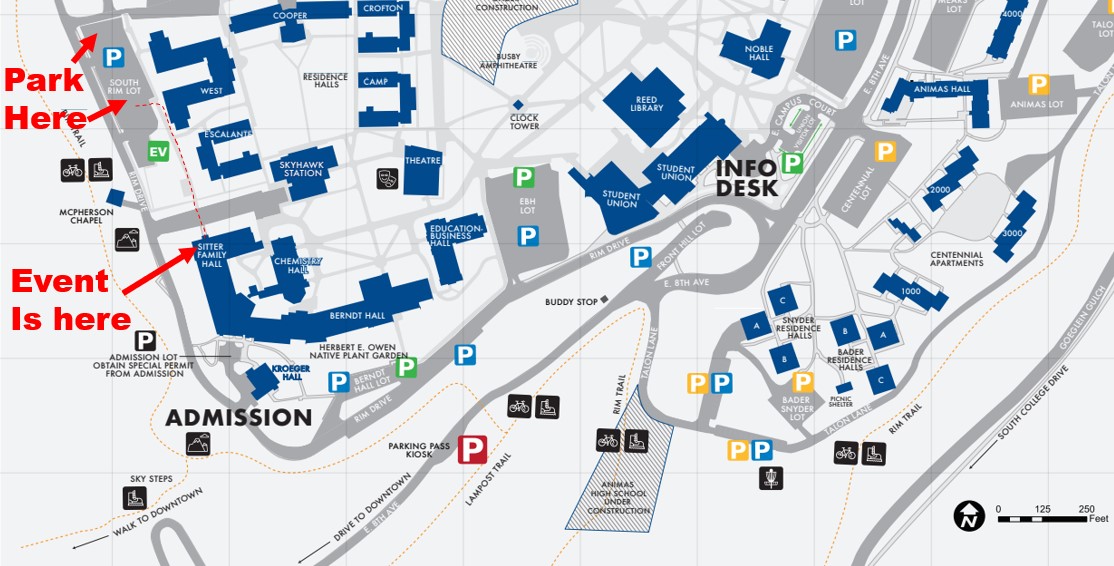Cost is $20 – Scroll down to pay online or RSVP to pay at door
- Happy Hour from 5:30 to 6:30 on the Sitter Family Hall 3rd floor deck overlooking the city of Durango with drinks and heavy appetizers.
- Talk starts at 6:30 pm in SFH 710 (the classroom with the wall-o-screens).
Abstract:
Subduction zones play a major role in large-scale Earth processes, including seismic and volcanic hazards and mass and volatile recycling. The interface between the overriding and downgoing plates accommodates convergent motion and evolves with depth from a brittle fault capable of hosting megathrust earthquakes to a viscous aseismic interface shear zone. In the transitional zone between seismic and aseismic motion, most modern subduction zones have a 3-5 km thick low seismic velocity zone (LVZ). LVZs have anomalously high ratios of P-wave to S-wave velocities (Vp /Vs = 1.8-2.5) consistent with near-lithostatic pore fluid pressures in 3-4% fracture porosity. Current competing models for the LVZ argue that it could be 1) the oceanic crustal portion of the downgoing slab beneath a narrow interface shear zone or 2) the seismic signature of a 3-5 km thick interface shear zone. To differentiate between these two, we estimated the thickness and seismic signature of a fossil subduction interface shear zone in the Condrey Mountain Schist (CMS) subduction complex in northern California.
The CMS is predominantly metasediments with m- to km-scale lenses of metamafic and serpentinized ultramafic rocks, all metamorphosed to epidote blueschist facies (460°C, 1 GPa). The CMS records distributed ductile deformation with coeval brittle failure across 3+ km packages of metasedimentary rocks with intercalated metamafic and serpentinized ultramafic lenses. Vp /Vs calculated using constraints from field observations is anomalously high and comparable to modern LVZs. Comparable seismic signatures and thicknesses between the CMS interface shear zone and modern LVZs suggest that the LVZ is the seismic signature of a distributed subduction interface shear zone.
Speaker Bio:
Carolyn Tewksbury-Christle is an Assistant Professor in the Geosciences Department at Fort Lewis College in Durango, CO. She completed her B.A. with a double major in Geology and Physics at Smith College in 2007, and her M.S. in Geology with a focus on near-surface geophysics at the University of Tennessee – Knoxville in 2013. After working as an optical physicist for the U.S. Air Force from 2007-2011 and an Assistant Professor of Physics at the U.S. Air Force Academy from 2013-2016, Carolyn returned to geology to complete her doctorate at ETH Zurich with Dr. Whitney Behr. Her research combines field and structural geology with microstructural observation, geochronology, and geophysical analysis to investigate deformation along fossil subduction interface shear zones. Carolyn’s work on the Condrey Mountain Window, a fossil subduction zone in the Klamath Mountains in northern California, provides key insights into the transition in seismic styles in modern subduction zones with depth.
Event Location (Fort Lewis College campus):


